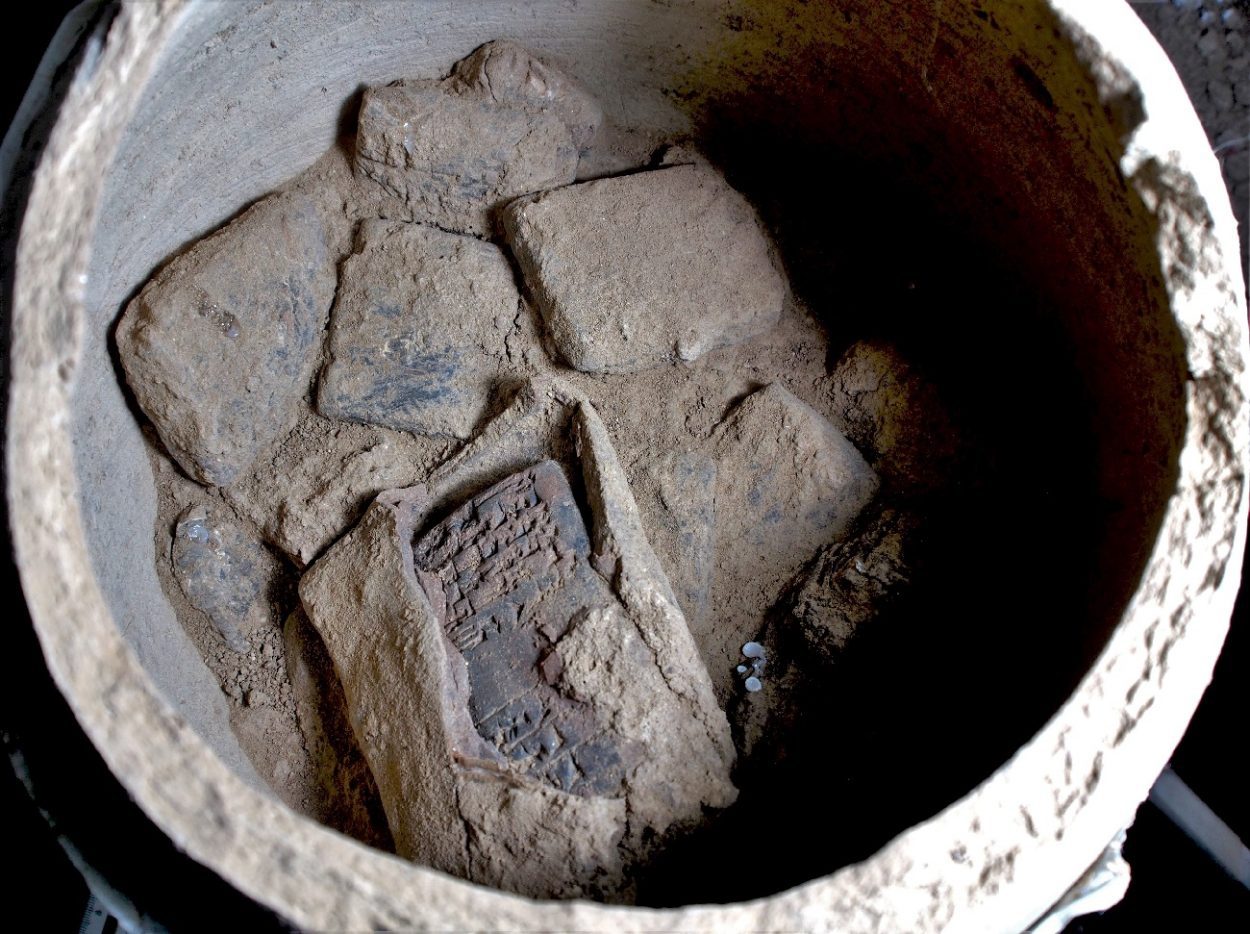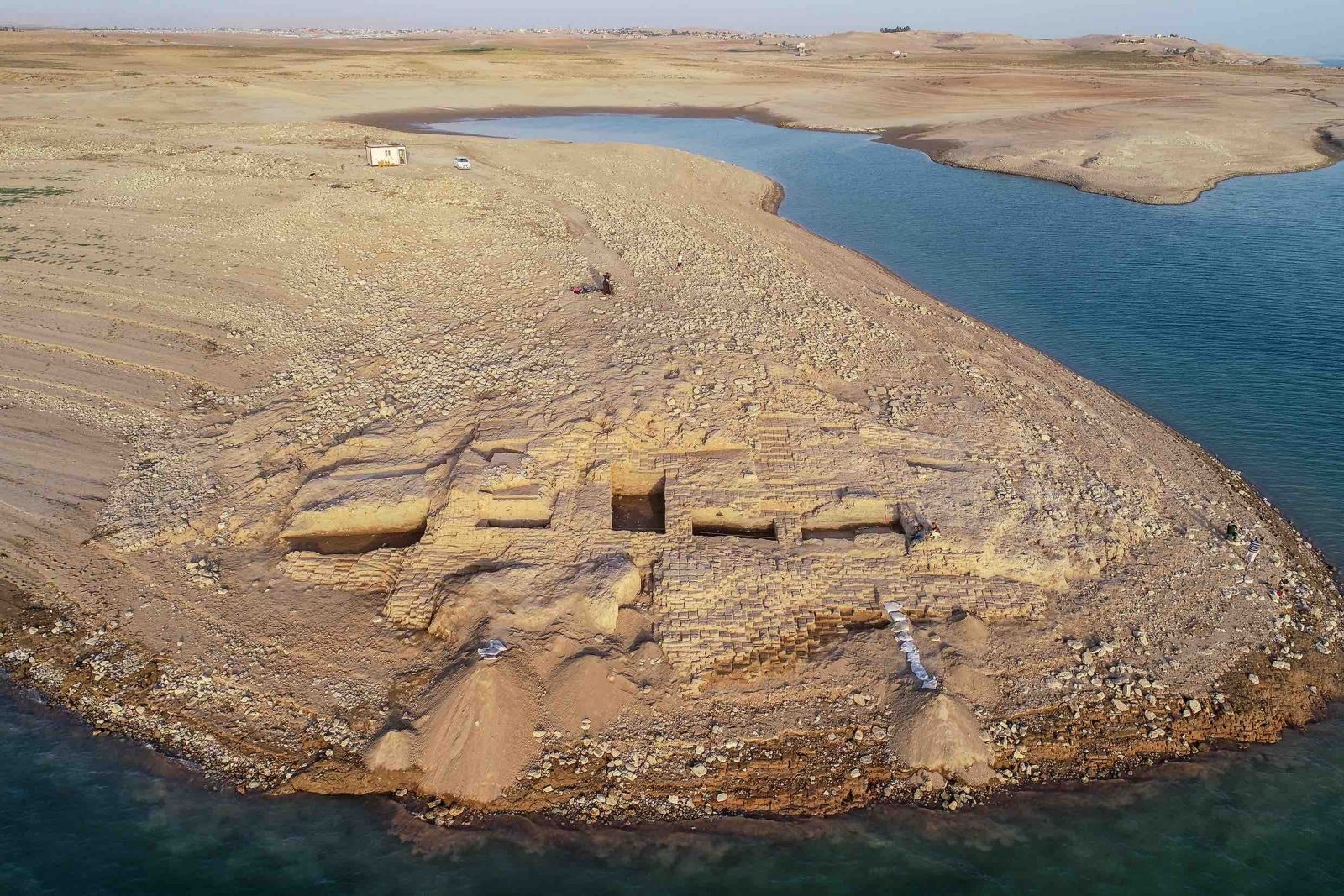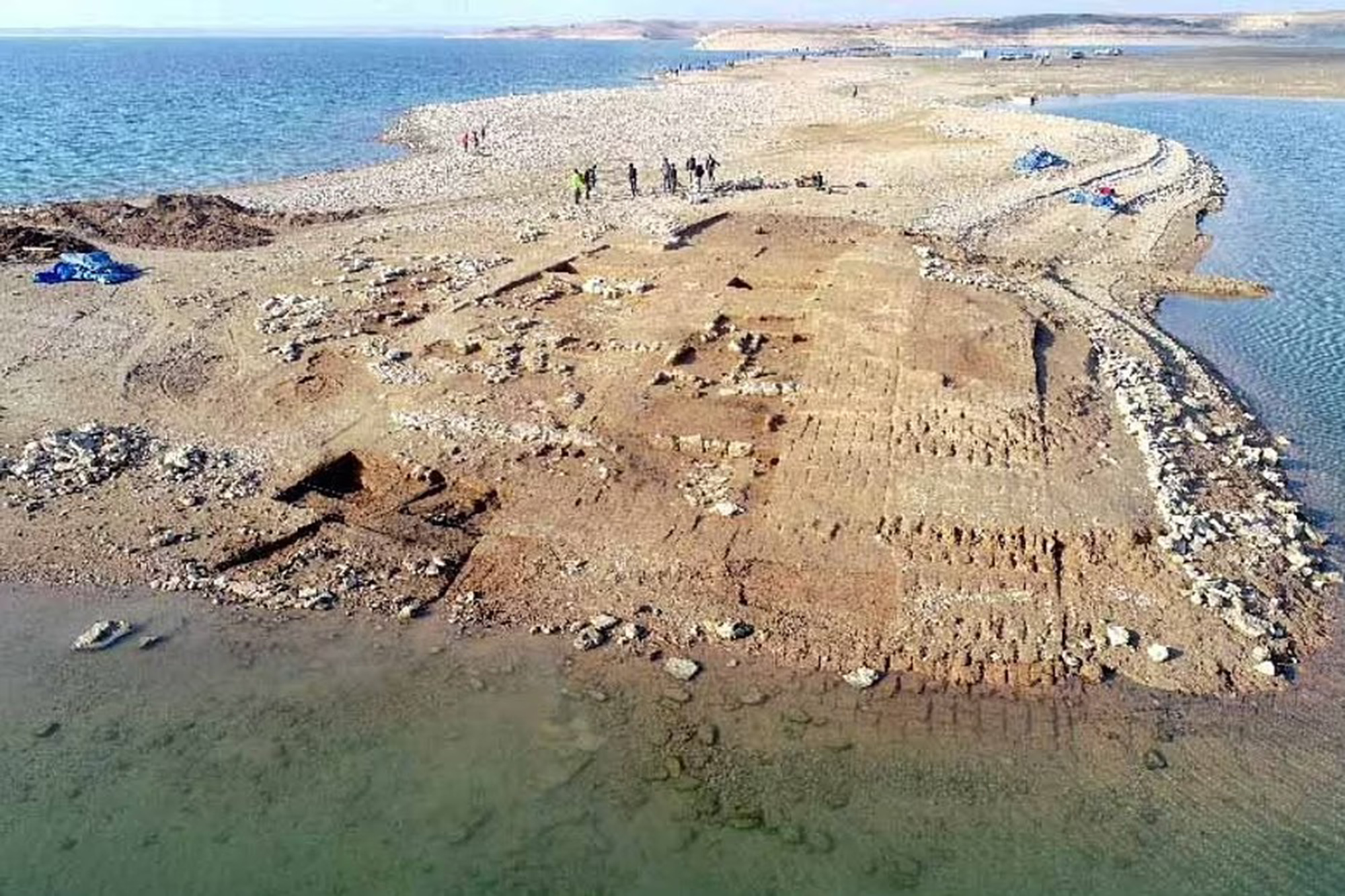On Iraq’s Tigris River, an ancient ‘lost’ city believed to be 3,400 years old has been unearthed.
The impact of climate change on our planet is revealing ancient mysteries that have been lost in time, as warming conditions cause ice and waters to retreat. In recent months, Iraq has been hit particularly hard by extreme drought, with the Mosul reservoir shrinking as water is extracted to keep crops from drying.
Amid this crisis, the submerged ruins of an ancient city have resurfaced on dry land, providing a rare opportunity for scientists to explore it. The archaeological site, named Kemune, consists of a palace and several other large structures dating back to the Bronze Age, around 3,400 years ago.
Scientists believe the ruins might be from the ancient city of Zakhiku, a bustling center for the Mittani Empire, which thrived on the banks of the Tigris River between 1550 and 1350 BCE. The preservation of the mud-brick walls is remarkable, considering the city has been submerged for decades.
This is not the first time that the city has risen from the waters like a lost Atlantis, as the dam waters receded in 2018, giving archaeologists a brief window in which to discover and document the ruins before the water level rose and covered them again. In December of 2021, when the city began to emerge once more, archaeologists were ready to take advantage of the second brief window.
In January and February of this year, archaeologist Hasan Ahmed Qasim from the Kurdistan Archaeology Organization in Iraq, along with fellow researchers Ivana Puljiz of the University of Freiburg and Peter Pfälzner from the University of Tübingen in Germany, set about mapping the mysterious city. In addition to the palace that was uncovered in 2018, the researchers found some other interesting structures, including a large fortification with a wall and towers, an industrial complex, and a huge, multi-story storage building, all dating back to the Mittani Empire.
“The huge magazine (storage) building is of particular importance because enormous quantities of goods must have been stored in it, probably brought from all over the region,” Puljiz says. One of the ceramic vessels found at the site contains cuneiform tablets.
Hits: 0








